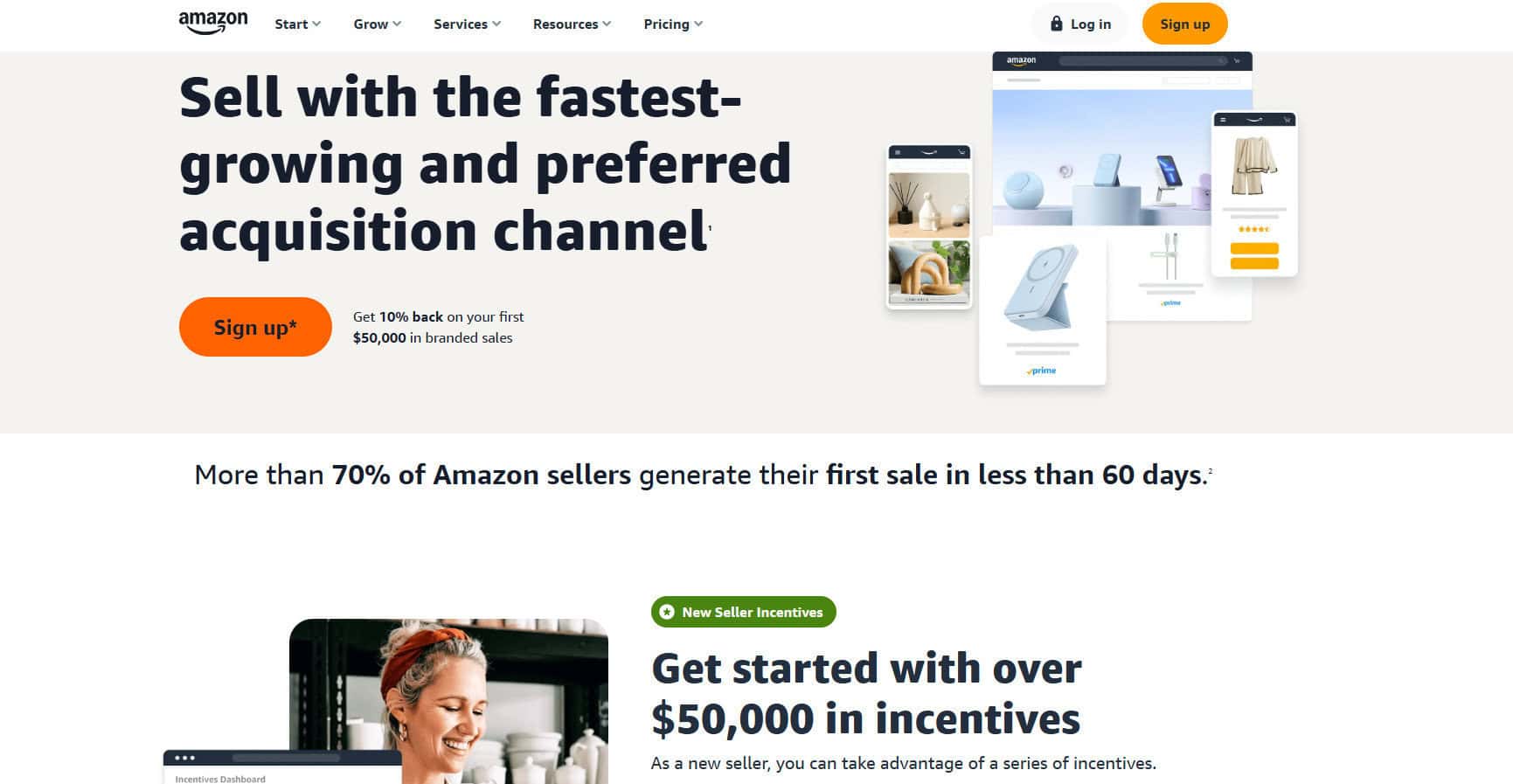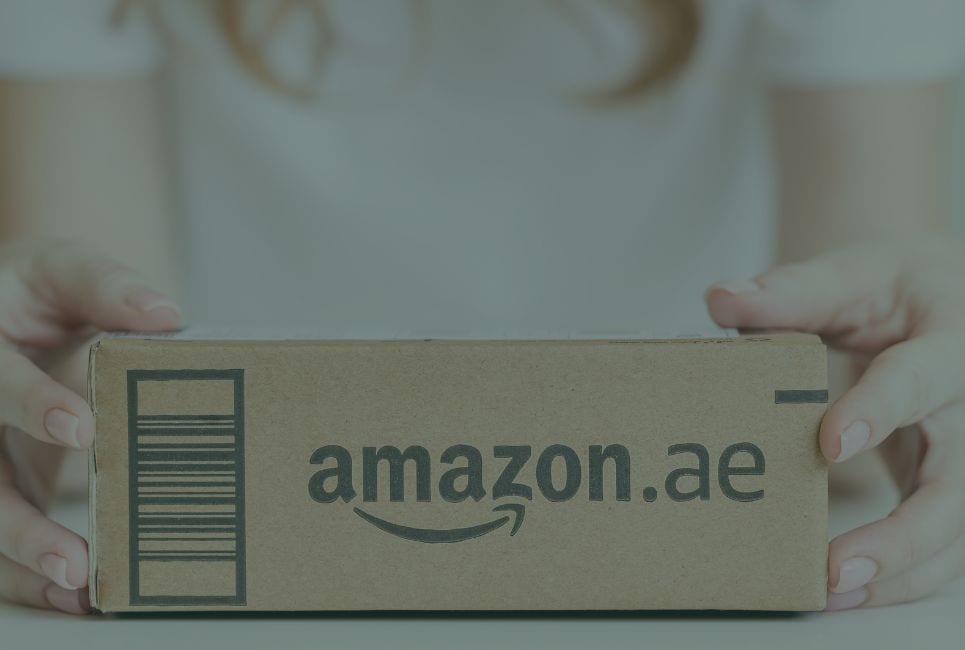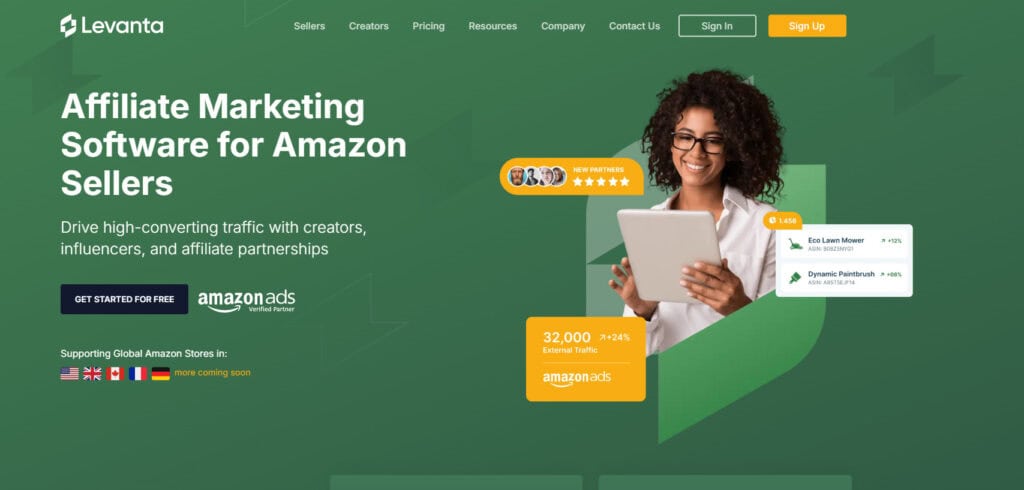Last Updated on November 18, 2025 by Ewen Finser
Sound familiar?
The truth is, Amazon is very competitive, and success isn’t as simple as listing a product and hoping for the best. It’s about understanding the algorithm, optimizing your strategy, and consistently driving traffic from both inside and outside Amazon.
If your Amazon sales aren’t where you want them to be, don’t worry. I’ll break down exactly how you can boost your visibility, increase conversions, and build a sustainable business on Amazon.
Why Do People Struggle With Amazon Sales?

If your products aren’t selling, it’s not because they’re bad: it’s because they’re not being seen.
The Amazon A10 Algorithm: How It Works
Amazon’s algorithm, known as A10, determines which products appear at the top of search results. While Amazon doesn’t share the exact formula, here’s what we do know:
- Sales history: The more you sell, the more Amazon trusts your product.
- Click-through rate (CTR): If people click on your product when it shows up in search, Amazon considers it relevant.
- Conversion rate: If a high percentage of those clicks turn into purchases, Amazon pushes your listing higher.
- Customer feedback: Reviews, ratings, and return rates all influence rankings.
- External traffic: Amazon rewards sellers who bring in traffic from outside sources like social media, blogs, and YouTube.
In other words, Amazon favors products that already have momentum. If your sales are slow, the algorithm assumes your product isn’t what people want and buries it.
But here’s the good news: you can build momentum with the right strategies.
How to Increase Amazon Sales
To consistently grow your sales, you need a multi-layered approach. That means optimizing your listing, increasing visibility, and bringing in your own traffic instead of waiting for Amazon to do it for you.
Step 1: Optimize Your Listing for Amazon SEO
Your product listing is your storefront, your sales pitch, and your first impression—all in one. If it’s not optimized, you’re losing sales before you even start.
Here’s how to get it right:
- Title: Put your most important keywords first while keeping it readable. Instead of “Water Bottle BPA-Free Stainless Steel Insulated Leak-Proof,” try: “Insulated Stainless Steel Water Bottle – BPA-Free, Leak-Proof, Keeps Drinks Cold 24 Hours”.
- Bullet Points: Highlight key benefits, not just features. Instead of “Lightweight design,” say: “Easy to carry – perfect for gym bags, hiking, and travel”.
- Description: Tell a story. Why does your product matter? How does it improve the customer’s life?
- Images & Videos: High-quality photos are essential. Show your product in use—if it’s a blender, show it making a smoothie, not just sitting on a counter.
Your goal? Make it as easy as possible for shoppers to say, “Yes, this is exactly what I need.”
Step 2: Drive More Traffic With Social Media
Amazon loves when you send traffic to your product listing from external sources. The more people visit your page, the more Amazon’s algorithm thinks, “Hey, this must be a popular product,” and ranks it higher.

Here’s how to leverage social media for sales:
- TikTok & Instagram Reels: Short, engaging product demos can go viral and drive thousands of clicks to your listing. If you’re selling a unique kitchen gadget, post a 15-second video showing how it saves time and makes cooking easier.
- Pinterest: Great for home, fashion, and lifestyle products. Pin high-quality images linking directly to your Amazon listing.
- Facebook Groups: Find niche communities related to your product. If you sell pet accessories, join dog owner groups and share helpful, non-salesy content featuring your product.
The key? Don’t just post a link to your Amazon page and hope for the best. Create content that makes people want to check out your product.
Step 3: Leverage Influencer Marketing
People don’t trust ads—they trust people. That’s why influencer marketing is so powerful.
How Influencer Marketing Can Drive Sales

Amazon shoppers love seeing products in action before they buy. If an influencer they trust recommends your product, their audience is way more likely to purchase it.
Here’s how to make it work:
- Find micro-influencers (5K-50K followers) in your niche. They often have higher engagement than big influencers.
- Gift your product in exchange for an honest review. If they love it, they’ll talk about it.
- Offer an affiliate link through Amazon’s Influencer Program so they get a commission for every sale they generate.
For example, if you sell a fitness product, reach out to a personal trainer on Instagram and offer them your product for free. If they post a review showing how they use it, their audience is far more likely to trust their recommendation and buy from you.
Step 4: Use Affiliate Platforms Programs Like Levanta
Instead of relying solely on ads, let other people sell your product for you.
Platforms like Levanta connect Amazon sellers with bloggers, influencers, publishers, YouTubers, and website owners who can promote your product through affiliate links. They get paid when they make a sale, so they’re highly motivated to help you succeed.
This strategy works especially well for niche products that perform well in detailed blog reviews and YouTube product comparisons.
I like Levanta in particular because they interface directly with your Amazon account, which can provide valuable insight and makes it easy to track your affiliate sales performance.
Levanta assembled this report to help digital merchants navigate the new AI-shaped buying journey. Discover why creators now drive the clicks AI can’t and how to turn that into revenue.
The Importance of Setting the Right Expectations
A lot of new sellers jump into Amazon expecting overnight success—but that’s not how it works.
Amazon Takes Time
Most sellers don’t break even for the first 3–6 months. Why? Because it takes time to:
- Build up enough sales to get Amazon’s algorithm on your side.
- Accumulate positive reviews (which increase conversions).
- Fine-tune your pricing and ad strategy.
Expect High Amazon Fees
Between referral fees, fulfillment costs, and advertising expenses, Amazon takes a big chunk of your revenue. If you’re pricing your product with thin margins, you might not be profitable.
Stay Consistent
Amazon isn’t a set-it-and-forget-it platform. You need to actively monitor your listings, optimize keywords, and test pricing strategies if you want long-term success.
Mistakes to Avoid When Trying to Increase Amazon Sales
Even the best strategies won’t work if you fall into common traps that sabotage your success. Many sellers unknowingly hurt their rankings, burn through their budgets, or fail to convert traffic into sales. Here are the biggest mistakes to avoid—and how to fix them.
1. Ignoring Product Reviews (or Getting Fake Ones)

Customer reviews are one of the most powerful factors in Amazon’s ranking system. If your product has a low rating (or not enough reviews), shoppers will scroll right past it.
But here’s the mistake sellers make: instead of focusing on earning genuine reviews, they try to take shortcuts like buying fake ones. Amazon is cracking down on this hard. If they catch you using review manipulation tactics (such as offering free products in exchange for five-star reviews), they can suspend or ban your account.
How to fix it:
- Encourage real reviews by delivering great products and customer service—if people love your product, they’ll talk about it.
- Use Amazon’s “Request a Review” button in Seller Central to get more organic feedback.
- Follow up with customers via Amazon’s messaging system (without violating policies) to thank them and remind them to leave a review.
- Consider Amazon Vine, a program where trusted reviewers test your product and leave honest, unbiased reviews.
- Improve your product based on negative reviews to make sure future customers have a better experience.
2. Over-Reliance on Amazon Ads Without Optimization
Amazon’s PPC ads (Pay-Per-Click) can boost visibility, but many sellers waste thousands on ads that don’t convert. The mistake? Throwing money at ads before optimizing your listing.
How to fix it:
- Optimize your product listing first with high-quality images, persuasive copy, and the right keywords.
- Test different ad types (Sponsored Products, Sponsored Brands, Sponsored Display) to see what works best.
- Start with a small budget and increase it only after seeing profitable conversions.
- Use negative keywords to filter out irrelevant traffic and avoid wasting ad spend.
- Analyze your ad data regularly to identify which keywords are driving sales and adjust bids accordingly.
3. Expanding Too Quickly Before Your First Product Succeeds
Many sellers get excited and launch multiple products too soon. The problem? If you haven’t mastered one product, launching more can spread your resources too thin.

How to fix it:
- Focus on one product at a time and scale only when you’re profitable.
- Reinvest earnings from your first product into launching the next one.
- Ensure your first product has at least 100+ reviews and steady sales before adding another.
- Research new product opportunities carefully to avoid launching something that won’t sell.
- Build a loyal customer base with your first product so they’re more likely to buy future releases.
4. Not Understanding Amazon’s Fees and Margins
Amazon takes a big cut of your revenue through referral fees, fulfillment fees, and storage costs. Many sellers price their products too low without considering these fees, only to realize they’re losing money on every sale.
How to fix it:
- Use Amazon’s FBA Calculator before setting your price to estimate true profit margins.
- Factor in hidden costs like returns, refunds, and advertising expenses.
- Consider bundling products to increase perceived value and boost margins.
- Raise your price strategically rather than competing in a race to the bottom.
- Monitor your account for unexpected fees, such as long-term storage costs.
5. Ignoring External Traffic Sources
Many sellers rely 100% on Amazon traffic, forgetting that Amazon rewards sellers who bring in their own customers. If you’re not leveraging social media, influencers, or affiliate marketing, you’re missing out on a huge competitive advantage.
How to fix it:
- Use Instagram, TikTok, or YouTube to showcase your product and generate hype.
- Work with bloggers and influencers to drive targeted traffic.
- Set up an email list or a landing page to capture leads and build long-term customer relationships.
- Run promotions and giveaways outside of Amazon to increase brand awareness.
- Join Amazon’s Brand Referral Bonus program, which rewards you for bringing external traffic.
6. Poor Customer Service and High Return Rates
Amazon tracks return rates and customer complaints, and if they’re too high, your listing can get suppressed.

How to fix it:
- Be 100% honest in your product listing—don’t exaggerate features or mislead customers.
- Provide detailed sizing charts and product dimensions to avoid mismatched expectations.
- Answer customer questions quickly and professionally to build trust.
- Improve your product packaging to prevent damage during shipping.
- Track reasons for returns and fix recurring issues (e.g., quality problems, misleading photos).
7. Running Out of Stock
If your product is selling well, that’s great: but if you run out of stock, it can kill your ranking. When your listing goes inactive, you lose sales momentum, and when you restock, you start from scratch.
How to fix it:
- Monitor your inventory levels daily to ensure you don’t run out unexpectedly.
- Order stock early to account for supplier delays or increased demand.
- Use Amazon’s Inventory Performance Dashboard to track trends and adjust your stock accordingly.
- Consider using multiple suppliers to prevent disruptions in your supply chain.
- Use Amazon’s Restock Inventory tool to get automated inventory suggestions.
Increasing Amazon sales isn’t about just one little thing: it’s about a whole strategy. If you optimize your listings, drive traffic through social media and influencer partnerships, leverage affiliate marketing, and set realistic expectations, you’ll set yourself up for long-term success.
Selling on Amazon is a marathon, not a sprint. Stay consistent, adapt to what’s working, and remember: even the biggest Amazon brands started exactly where you are now.



